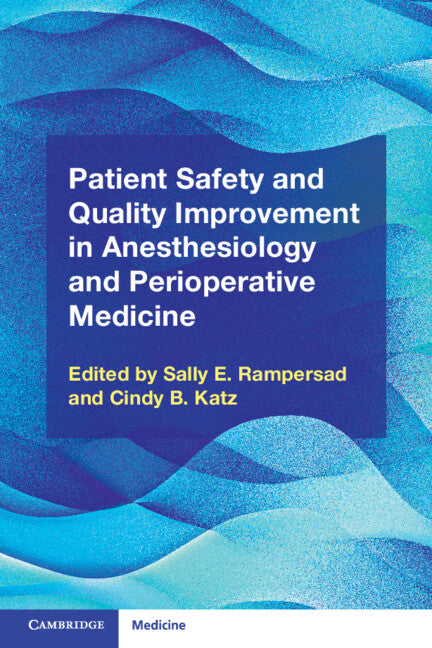Freshly Printed - allow 4 days lead
Couldn't load pickup availability
Patient Safety and Quality Improvement in Anesthesiology and Perioperative Medicine
A concise guide for clinicians and nurses offering real-life replicable strategies to ensure the success of quality improvement projects.
Sally E. Rampersad (Edited by), Cindy B. Katz (Edited by)
9781316642306, Cambridge University Press
Paperback / softback, published 25 May 2023
200 pages
23.5 x 15.6 x 0.9 cm, 0.31 kg
An accessible and richly illustrated guidebook to the most important methodologies and frameworks for improving safety and quality, written specifically for clinicians in anaesthesia and perioperative medicine. The book begins with chapters on design and the use of simulation to set the stage for successful quality improvement (QI) efforts before providing an in-depth look at the individual tools, reporting and use of databases. The following chapters then discuss the use of these tools and theories in practical projects. Finally, the book considers the difficult topic of people, communication and behaviour, importantly addressing the human factors that can make or break QI efforts. The book skilfully blends expert knowledge and valuable examples from years of experience and trials from varied providers to demonstrate the successful paths to improve patient outcomes. For clinicians, nurses and trainees in anaesthesia and perioperative medicine seeking tools and strategies to lead and participate in QI projects.
1. Introduction Sally E. Rampersad
Part I. Design and Simulation: 2. Use of simulation and patient safety Douglas R. Thompson
3. Using human-centered design to create a safer anesthesia workspace Eliot Grigg and Axel Roesler
Part II. QI Tools: 4. Preoccupation with failure: daily management system Aaron Dipzinski and Lynn D. Martin
5. Lean vs. model for improvement Julianne Mendoza and David Buck
6. Cause analysis Kristina A. Toncray
Part III. Reporting and Databases: 7. Reporting adverse events Rebecca Claure and Julianne Mendoza
8. Learning from adverse events – Classification systems Imelda Tjia and Nathaniel Greene
9. Databases and surgical quality improvement: pooling our data Manon Haché and Cindy B. Katz
Part IV. Putting Tools into Practice: 10. Medication safety at a pediatric hospital and Failure Modes Effects Analysis (FMEA) Lizabeth D Martin
11. Reducing preventable clinical deterioration through the use of a safety surveillance team Joan S. Roberts and Wendy E. Murchie
Part V. People, Behavior, and Communication: 12. Nursing perspective in patient safety: quality, safety, advocacy Cindy B Katz
13. Checklists and transitions of care: a how-to guide Daniel KW Low
14. Communication tools to improve patient safety Kristina A. Toncray
15. Winning hearts and minds: leading change Lynn D. Martin, Daniel K. W. Low and Sally E. Rampersad.
Subject Areas: Anaesthetics [MMB]


